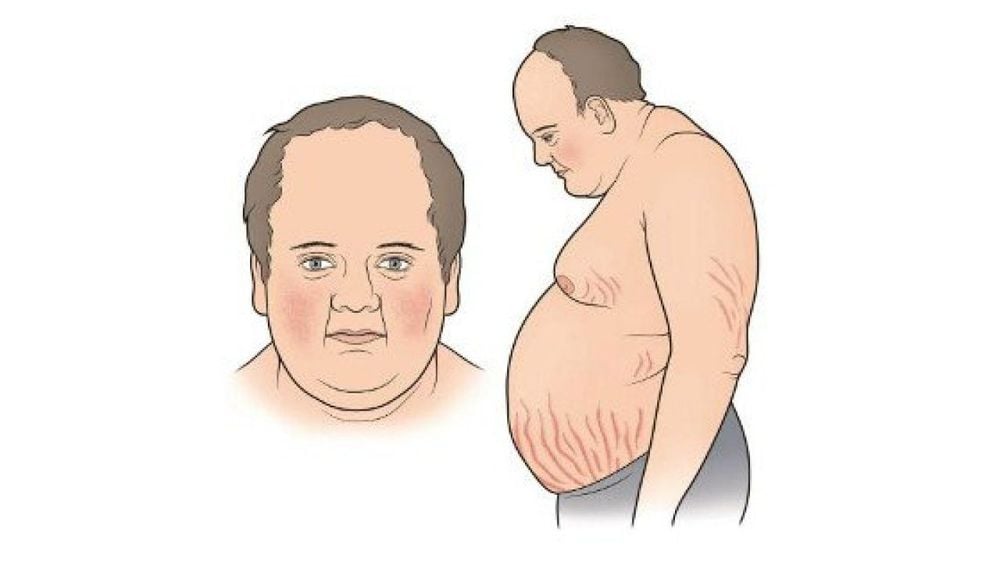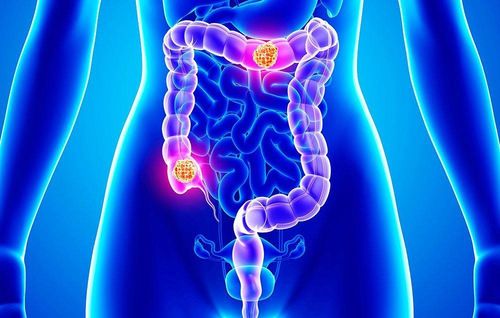This is an automatically translated article.
The article is professionally consulted by Master, Doctor Nguyen Thi Ngoc - General Internal Medicine - Endocrinology - Department of Examination & Internal Medicine - Vinmec Central Park International General Hospital.
Neuroendocrine tumors originate in specialized cells of the body's neuroendocrine system. These cells have the characteristics of both hormone-secreting cells and neurons, and are found in all organs of the body, thus neuroendocrine tumors include many different types with different symptoms. symptoms are very different.
1. Classification of neuroendocrine tumors
Neuroendocrine tumor (NET) originates from specialized cells of the body's nervous system, which are found throughout the body. Thus, neuroendocrine tumors can arise from any part, and can be classified based on the location of the tumor. The most common types of neuroendocrine tumors are:Gastrointestinal neuroendocrine tumor (GI NET): The gastrointestinal tract is the most common site for neuroendocrine tumors, especially in the urinary tract. colon (19%), appendix (4%) and colon (20%). Gastrointestinal neuroendocrine tumors were formerly known as carcinoid tumors. Most gastrointestinal neuroendocrine tumors progress slowly. Most of these tumors start in the small intestine and release serotonin. Too much serotonin causes carcinoid syndrome. It has two subgroups: highly differentiated gastrointestinal neuroendocrine tumors and poorly differentiated gastrointestinal neuroendocrine tumors. Lung neuroendocrine tumor (lung NET): Lungs are the second most common site of neuroendocrine tumors, after the gastrointestinal tract. Approximately 30% of pulmonary neuroendocrine tumors occur in the bronchi. Pulmonary neuroendocrine tumors were formerly also called carcinoid tumors. It has 4 subgroups: typical carcinoid tumor, atypical carcinoid tumor, large cell lung neuroendocrine tumor, small cell lung neuroendocrine tumor. Pancreatic neuroendocrine tumor (pNET): Approximately 7% of all neuroendocrine tumors occur in the pancreas. Pancreatic neuroendocrine tumors were formerly known as islet cell tumors. It also has 2 subgroups: highly differentiated pancreatic neuroendocrine tumors and poorly differentiated pancreatic neuroendocrine tumors. It can also be classified based on the hormones the tumor produces as insulinoma, glucagonoma, somatostatinoma Neuroendocrine tumors can occur in the adrenal glands (called pheochromocytoma, and paraganglioma). neurological - paraganglioma), but rare. In addition, thyroid myeloma, parathyroid adenoma, thymoma, pituitary gland tumor, ovarian or testicular tumor, Merkel skin cell tumor are also seen. Besides classification according to the location of appearance, neuroendocrine tumors are also classified according to histopathological morphology, according to malignancy, or classified into active neuroendocrine tumors and inactive neuroendocrine tumors. motion.

U thần kinh nội tiết
2. Symptoms of neuroendocrine tumors
A neuroendocrine tumor may not show any signs and symptoms if it grows slowly and doesn't secrete too much of a certain hormone. Signs and symptoms will appear when the tumor is large enough or the tumor is active (adequately secreting hormones). However, it should be noted that the signs and symptoms seen in neuroendocrine tumors can also be seen in other conditions.Signs and symptoms of neuroendocrine tumors vary based on the location of the tumor.
2.1 Gastrointestinal neuroendocrine tumor symptoms Gastrointestinal neuroendocrine tumors can appear in any part of the digestive tract, including the colon or colon and the stomach. The signs and symptoms of gastrointestinal neuroendocrine tumors may manifest as:
Discomfort, or pain in the abdomen or rectum. Nausea and vomiting. Diarrhea . Rectal bleeding, or blood in the stool. Anemia, which can cause fatigue. Heartburn or indigestion. Stomach ulcers, and can cause heartburn, indigestion, and pain in the chest or abdomen. Weight loss. Mechanically interferes with the digestive tract, which may cause abdominal pain or constipation. Carcinoid syndrome is a group of symptoms caused by neuroendocrine tumors that release large amounts of the hormone serotonin and other chemicals into the bloodstream. Carcinoid syndrome can occur with any type of neuroendocrine tumor, but it most commonly occurs in small bowel neuroendocrine tumors that have spread to the liver. Signs and symptoms of carcinoid syndrome include:
Hot flashes, mainly in the face and neck area. Diarrhea. Wheezing, difficulty breathing. Fast or irregular heartbeat. Low blood pressure. Damage to the heart (carcinoid heart disease). A carcinoid crisis is a serious situation that includes hot flashes, low blood pressure, shortness of breath, and cardiac arrhythmias. An acute carcinoid attack may be triggered by anesthesia, surgery, or other medical procedures. Acute carcinoid attacks can be life-threatening, so appropriate and timely intervention is necessary. A medicine called octreotide (Sandostatin) can be used to treat and reduce the risk of an acute carcinoid attack.
2.2 Symptoms of Pulmonary Neuroendocrine Tumors Pulmonary neuroendocrine tumors usually develop in the bronchi. Symptoms of pulmonary neuroendocrine tumors include:
Persistent cough that does not go away. Hemoptisi. Shortness of breath. Tired. Pneumonia. Carcinoid syndrome. Cushing's syndrome is a group of symptoms caused by overproduction of the hormone cortisol. Cushing's syndrome can occur in patients with neuroendocrine tumors (including those of the lung and pancreas) when too much adrenocorticotropic hormone (ACTH) is released. Signs and symptoms of Cushing's syndrome include:
Weight gain. The face is round, full and red. Muscle weakness. Hirsutism on the face and body. Accumulation of fat between the shoulders or above the collarbone. Purple skin streaks. Hypertension . Increase blood sugar levels. Change behavior and emotions.

Hội chứng Cushing
Low blood sugar, which can cause sweating, dizziness, extreme hunger and difficulty concentrating. Increased blood sugar levels, causing extreme thirst, frequent urination, diarrhea, and fat in the stools. Stomach ulcers, which can cause heartburn, indigestion, and pain in the chest or abdomen. Weight loss. Red, itchy, and painful areas of skin appear. Jaundice. Thrombosis. Cushing's syndrome. Zollinger-Ellison syndrome occurs when too much gastrin is secreted, causing the amount of acid secreted by the stomach to increase, leading to ulcers in the stomach or small intestine. Zollinger-Ellison syndrome may occur in patients with gastrin-secreting pancreatic or small bowel neuroendocrine tumors (gastrinoma). Signs and symptoms of Zollinger - Ellison syndrome include:
Abdominal pain. Severe diarrhea. Heartburn. Nausea and vomiting, sometimes vomiting blood. Weight loss. Master, Doctor Nguyen Thi Ngoc has more than 10 years of studying, researching and working in the field of endocrinology. Doctor Ngoc graduated with a Master's degree in General Internal Medicine from Hanoi Medical University and studied as a Resident Doctor at Lyon University (France). Currently, Dr. Ngoc is a treating doctor at the Department of Examination and Internal Medicine, Vinmec Central Park International General Hospital.
Please dial HOTLINE for more information or register for an appointment HERE. Download MyVinmec app to make appointments faster and to manage your bookings easily.
References: cancer.ca
MORE:
What is cancer? Difference Between Cancer Cells and Normal Cells When is a full-body magnetic resonance imaging (MRI) required? How many radiation treatments are there? Which option is reasonable?













